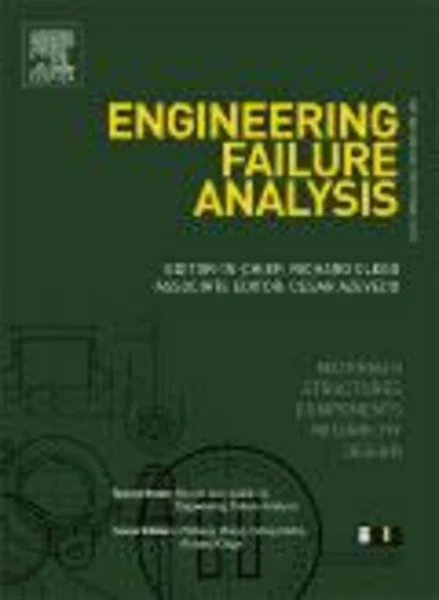-
analysis of different techniques for obtaining pre-cracked/notched small punch test specimens
جزئیات بیشتر مقاله- تاریخ ارائه: 1390/01/01
- تاریخ انتشار در تی پی بین: 1390/01/01
- تعداد بازدید: 722
- تعداد پرسش و پاسخ ها: 0
- شماره تماس دبیرخانه رویداد: -
nowadays, there are standards for determining the mechanical and fracture properties of a material. however, these standards require a sufficient amount of material to be tested, something that is not always possible or convenient. in those cases where there is not enough material for conducting conventional tests to determine these properties of the material analyzed, there are now several non-standard tests that will achieve this purpose. one of them is the small punch test (spt), which basically consists of deforming a miniature specimen using a high-strength punch, while the sides of the specimen are clamped between two dies. one of the greatest challenges at present is to obtain the fracture properties of a material from this type of test using pre-cracked specimens. to achieve this initial crack in the spt specimen prior to fracture testing, there are two techniques which are mainly being used at present. the first one uses high-precision micromachining (hpm), while the second relies on laser-induced micromachining (lim). the main objective of this paper is to analyze the differences between these two techniques, taking into account the shape of the pre-crack obtained and the stress distribution at the pre-crack tip during the test. in this way, it is possible to determine which of them is the most appropriate for estimating the fracture properties of the material used.
مقالات جدیدترین رویدادها
-
استفاده از تحلیل اهمیت-عملکرد در ارائه الگوی مدیریت خلاقیت سازمانی و ارائه راهکار جهت بهبود
-
بررسی تاثیر ارزش وجوه نقد مازاد بر ساختار سرمایه شرکت های پذیرفته شده در بورس اوراق بهادار تهران
-
بررسی تأثیر سطح افشای ریسک بر قرارداد بدهی شرکت های پذیرفته شده در بورس اوراق بهادار تهران
-
بررسی تأثیر رتبه بندی اعتباری مبتنی بر مدل امتیاز بازار نوظهور بر نقد شوندگی سهام با تأکید بر خصوصی سازی شرکت ها
-
تأثیر آمیخته بازاریابی پوشاک ایرانی بر تصویر ذهنی مشتری پوشاک ایرانی (هاکوپیان)
-
معرفی و مقایسه روش های تعیین سرفاصله در حمل و نقل همگانی
-
چگونگی ایفای نقش بانک مرکزی در بازارهای ارز و پول
-
تحلیل پایداری قطار شهری شیراز با استفاده از نرم افزار twofs و مقایسه با روابط تجربی
-
natural convection from inclined plates to gases and liquids when both sides are uniformly heated at the same temperature
-
effect of near- field ground motions on the stability of embankment dams
مقالات جدیدترین ژورنال ها
-
مدیریت و بررسی افسردگی دانش آموزان دختر مقطع متوسطه دوم در دروان کرونا در شهرستان دزفول
-
مدیریت و بررسی خرد سیاسی در اندیشه ی فردوسی در ادب ایران
-
واکاوی و مدیریت توصیفی قلمدان(جاکلیدی)ضریح در موزه آستان قدس رضوی
-
بررسی تاثیر خلاقیت، دانش و انگیزه کارکنان بر پیشنهادات نوآورانه کارکنان ( مورد مطالعه: هتل های 3 و 4 ستاره استان کرمان)
-
بررسی تاثیر کیفیت سیستم های اطلاعاتی بر تصمیم گیری موفق در شرکتهای تولیدی استان اصفهان (مورد مطالعه: مدیران شرکتهای تولیدی استان اصفهان)
-
بررسی تاثیر چابکی سازمانی و خلاقیت سازمانی بر عملکرد شغلی کارکنان بانک توسعه صادرات ایران
-
اصطلاحات نجومی و بازتاب آن در شعر برخی از شاعران
-
«فمنیسم پسااستعماری و جنبش متقدم زنان در ایران» دیگری سازی و مناسبات سلطه
-
مدلی برای تحقق اهداف اقتصاد مقاومتی در بیمارستان (مطالعه موردی: بیماران مبتلا به بیماری های خاص)
-
the study of electron-orbital properties of bipolar energy of complex (2,6-diaminopyridinium bis (4-hydroxy-pyridine-2,6,6-dicarboxylate) dihydrate chromate iii))) with alteration of ligands by computational methods




سوال خود را در مورد این مقاله مطرح نمایید :